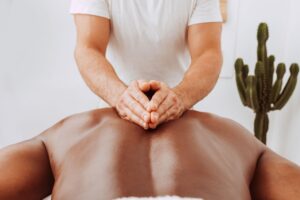The Benefits of Outdoor Exercise for Physical and Mental Health

Exercise is important for both your physical and mental health. The more you exercise, the better your overall health will be.
Not only does exercise help burn calories, but it also improves heart health and can reduce your risk of developing heart disease and other conditions like diabetes.
It also helps lower blood pressure levels by increasing blood flow throughout the body.
Physical health benefits

- Improves cardiovascular health.
- Reduces risk of heart disease.
- Lowers blood pressure, which can help with stroke and other forms of cardiovascular disease.
- Improves bone density, which is important for preventing osteoporosis later in life (the loss of bone mass).This benefit occurs because exercise helps the body to use available calcium more effectively, improving its ability to absorb it from food sources like dairy products or leafy greens.
- Helps maintain a healthy weight, exercise burns calories, and causes your body to burn more fat than it would have otherwise burned had you not exercised at all!Additionally, when we’re active our bodies produce endorphins that make us feel happy, this may account for why people tend to like going out for walks after their workout session, they’re enjoying their exercise as much as they are their endorphins!
Mental health benefits

- Reduce stress.
- Improve memory and concentration.
- Increase the creativity and problem-solving skills, as well as self-esteem.
- Reduce depression, which can lead to a host of other negative health effects such as decreased energy levels or weight gain (which in turn can lead to heart disease).
How much exercise is enough?
To know how much exercise is enough, you first need to know what your sweat rate is. If you’re not sure of your sweat rate, simply take a shower after working out and remove all clothing except for underwear or socks.
Then measure the amount of water that comes out in one minute (this is called a “sweat rate”).
Your fitness level will determine how hard you work out and how many calories are burned during an activity.
If someone has been inactive for a long period of time or hasn’t exercised in years, they will have a lower “base” value than someone who has maintained their fitness level throughout their lives.
For example, if someone has been running for 20 minutes three times per week for five months but never engaged in any other form of physical activity before this point in time then their base value might be only around 150 ounces per hour (what’s known as an “ounce”).
On the other hand, if this person was already very fit before starting running then they could easily reach 250 ounces per hour which put them into the elite athlete category!
Exercises and fitness levels
Fitness levels are measured by a number of factors, including body weight and body fat percentage. Another way to measure fitness is by how much you can lift.
Your fitness level also depends on how much oxygen you use during exercise and the amount of energy it takes for your muscles to contract (i.e., when lifting weights).
Fitness levels can be measured in several ways:
- Number of pushups performed in one minute
- Number of sit-ups completed in one minute
Types of exercise
In general, there are three types of exercise:
- Cardiovascular fitness. This is the heart and lungs’ ability to deliver enough oxygen-rich blood throughout your body.Exercise improves cardiovascular fitness by helping you burn more calories and put more strain on your heart and lungs, which can help prevent diseases such as high blood pressure or diabetes.
- Muscle strength training. This typically involves working out specific muscle groups in order to build bulkier muscles or increase overall strength levels.Examples include pushups, pullups, squats, and lunges; although not all trainees will benefit from these exercises equally, the only way to know for sure is through trial-and-error experimentation!
For example: if I want bigger arms but don’t want them atrophied after a few months, then maybe bench presses would be better instead.
How much exercise is OK?
If you’re new to exercise and want to start slowly, a good rule of thumb is 30 minutes of physical activity every day. The more often you exercise, the better: Research shows that people who are physically active have lower rates of cardiovascular disease and diabetes than those who are inactive. But even if you’re already exercising regularly, there’s no reason not to up your game by adding in some extra fitness activities like dancing or running around with friends!
Fitness and topics like weight loss or body image
Fitness is a topic that can be intimidating to some people, especially if they’re not used to thinking about their bodies in this way. But it doesn’t have to be.
Fitness is about more than just weight loss or body image—it’s about being fit for your body, feeling good and looking good, being able to do the things you want to do (and not feel limited by pain), and having a positive mental state overall. Fitness isn’t just about how much weight you weigh; fitness is also about how strong your muscles are when they should be strong and flexible enough so that they don’t hurt when trying something new like running upstairs or dancing around at weddings!
Exercise is important for both your physical and mental health
- Physical Health Benefits
Exercise is important for both your physical and mental health. It’s a great way to improve the quality of your life, improve your health, and reduce stress.
Exercise can even help prevent some diseases like diabetes and high blood pressure.
- Mental Health Benefits
Exercise has been shown to have positive effects on mental health as well. Feeling fit makes you feel better about yourself overall while also giving you more energy to face challenges head-on!
Exercise can help with depression, anxiety disorders like OCD or PTSD (post-traumatic stress disorder), and ADHD/ADD (attention deficit hyperactivity disorder) among other issues that affect people’s lives daily such as low self-esteem or body image concerns.
Conclusion
We hope that this article has given you some insight into the importance of exercise and how it can help improve your overall health.
As we mentioned earlier, there are many different types of exercise that you can participate in, so find one that works best for you and get started today!

